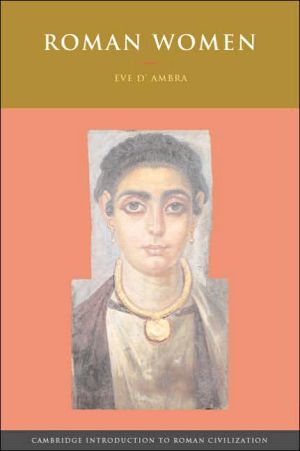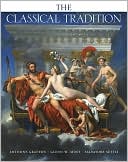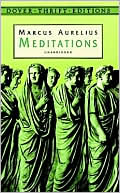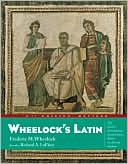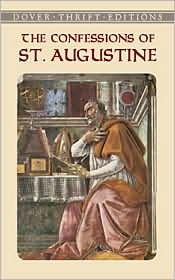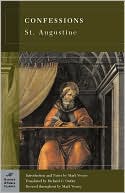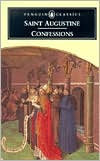Roman Women
This richly illustrated book examines the daily lives of Roman women by focusing on the mundane and less-celebrated aspects of daily life - family and household, work and leisure, worship and social obligations - of women of different social ranks. Using a variety of sources, including literary texts, letters, inscriptions, coins, tableware, furniture, and the fine arts, from the late republic to the high imperial period, Eve D'Ambra shows how these sources serve as objects of social...
Search in google:
This book examines the daily lives of Roman women.
\ Cambridge University Press\ 978-0-521-81839-1 - Roman women - by Eve D'Ambra\ Excerpt\ \ CHAPTER 1\ GENDER AND STATUS\ Being a woman in ancient Rome bears only some resemblance to the current range of experiences available to women. Students of classics and history tend to see continuities in the importance given to marriage and family, home and hearth, yet the Roman institutions that shaped lives were fundamentally different than those of postmodern society. For example, a young Roman woman married a man of her parents’ choosing and later divorced if her parents thought it advisable, and both of these milestones were accomplished with the minimum of legal procedures (if one possessed the legal capacity to marry, then consent to marry was required, along with the performance of ritual acts; divorce was rather an informal affair marked by the wife leaving the husband’s house and the return of her dowry, if merited). The stories of the first marriages in Rome told of women abducted by their future husbands, acts that are not only incompatible with girls’ visions of romantic love but also criminal in most contemporary societies. Some Roman lives seem familiar to us from tales of wifely virtue and heroic action, but we must realize how every aspect of their world reinforced a social system based on inequality and elitism. Its institutions and culture were also configured in a way that may disorient or confuse us: what we consider private and public did not conform to Roman definitions, andtheir spheres of work and leisure, politics and administration, included activities that would strain our understanding of these categories. Rediscovering Roman women requires an ability to mine the ancient source material with imagination firmly grounded in social reality.\ Sources\ Histories of Roman women have tended to set them apart, as if one could get a sense of their lives without dealing with men (but, of course, it was their dependence on fathers and husbands that has obscured their identities). Partly this isolation results from the intent to give the silent women of Rome the attention they merit and to restore their voices to the historical record. Yet, these accounts have tended to elevate the exceptional, larger-than-life characters and events that stand out from everyday life, which pales in comparison. Another trend in earlier studies was to cast Roman matrons as the liberated ladies of antiquity compared with the more retiring and sheltered women of Greece, for example. Although Roman women had citizenship and powers over their property, their freedom and well-being were contingent on their relationships with husbands and fathers and their social class; in other words, they were not free agents. In part, the older scholarship has taken its cues from the ancient sources that characteristically note differences from the norm rather than explain what remained obvious to the ancient reader.\ This book is about how Roman women lived with an emphasis on the mundane and less-celebrated aspects of daily life, that is, family and household, work and leisure, worship, and social obligations of women of different social ranks. The evidence is culled from written sources (both literary and nonliterary texts, such as letters and inscriptions), material culture (coins, tableware, furniture, etc.), and the fine arts in the periods from the late republic through the high empire (mostly from the first century B.C.E. through the second century C.E.). The ancient sources, both verbal and visual, are discussed as objects of social analysis rather than simply as documents of how life was lived. Some objects, such as ceramic cups, may give us a sense of their use; others, such as poems or sculpted portraits, may not reflect reality directly or transparently (laments over of a young girl’s death, images of radiant beauty, etc.) but rather project specific points of view or ideals that reveal how Romans imagined their world. In other words, such texts or objects take part in shaping realities and can elicit the texture of lives and social attitudes, if not traces of emotions. Particularly because women do not speak to us directly in the ancient sources (exceptions noted in the following), it is important to determine who is representing them and for what purposes.\ For example, clothing, as a purely functional object of everyday life that protected the wearer from the elements, was invested with symbolic value. According to some literary texts, dress distinguished respectable women from those without shame. The costume connoting the modesty of matrons (that is, married women of good standing) required the stola, after interpreted as a long garment hung from shoulder straps and reaching to the toes (a tunic was worn under it). There are some, but not many, statues that depict the stola dated to the late first and early first centuries B.C.E. to C.E. The problems lie with the archaeological evidence: fragments of cloth survive, mostly from the deserts of Roman Egypt and dating to late antiquity or the medieval period (rather than the periods of the republic and empire that concerns us). Otherwise, clothing is depicted in works of art, carved on statues, or portrayed in paintings, media that are not well suited to display the sheen of Coan (shot) silk nor its rustle in passing, despite some sculptors’ virtuoso skills in carving layers of drapery wafting around a graceful figure. The poet Propertius addresses his mistress: “What good is it, promenading that way, your coiffure amazing, your couture an impressive shimmer of Coan silk as your skirts swing this way and that?” (1.2.1–3, trans. D. Slavitt). The iridescent quality of the fabric made its wearer appear sexy and desirable. The cost of such luxury, no doubt, also increased its allure for both the clotheshorse and her admirers. It is not easy to identify fabrics, let alone garments, depicted in works of art. Rather than mortal women, Venus, the goddess of sensuality and beauty, was more likely to exhibit clinging and filmy drapery in statue types (and she appears as a resplendent vision in myth). The goddess, however, had no shame, but these women in silk have been cast by scholars as either daring creatures who defied traditional codes of conduct or as pawns in a system that defined them as the “other” (as compared with the elite male) and trivialized their concerns for their appearance.\ We have even less visual evidence of the matron’s polar opposite, the prostitute. Women of easy virtue were thought to wear the male uniform of the toga as a reversal of the norm and, perhaps, to declare their bodies to be in the public domain. The togate (toga-wearing) prostitute is not depicted in art, and for good reason – statues of women were erected by their husbands and fathers to honor them for their exemplary roles as wives and mothers. Women who traded sex for money were not worthy of the medium of costly marble statues and, thus, were excluded from this prestigious form of representation.\ In other words, several literary accounts set up a rigid hierarchy of appearances with dress codes. It is debatable whether these were so strictly followed in life: in the visual arts respectable women often wore simple tunics and mantles instead of the honorary stola and other groups of women are not identifiable at all by costume (Figure 1). The same authors who promoted the traditional and modest stola also inform us that women covered their heads with their mantles when outside; yet, many portrait statues and busts depict women with heads unveiled to display showy, complex hairstyles (see Chapter 3). The male authors of the texts that have dominated our view of Roman women advanced standards of womanly behavior that best served the interests of patriarchy. Such representations of Roman women deployed a conventional or stereotypical language that cast women as weak, vain, and inherently amoral creatures. The litany of complaints against the female citizenry produced a steady, monotonous drone only broken by praise for the rare woman who exhibited the male virtues of self-control, discipline, and devotion to the greater good of the state. Neither the texts prescribing the female dress code nor the gleaming statuary depicting women draped from head to toe reflected reality in a truthful nor comprehensive way – rather, they provided models of ideal behavior for elite women to follow and, in this function, served as part of the ideological cultural apparatus that sought to control wives and mothers. That these ideals were highly contentious to some and did not reach their targeted audience is evident in the archaeological finds that suggest alternate ways of dressing up and looking like a woman.\ 1. Naples, Museo Archeologico Nazionale, inv. 9022, from Herculaneum. Erich Lessing/Art Resource, N.Y., 16856. Painting of a woman’s toilette, early first century C.E. The scene is divided in half with two women watching the third being dressed by her attendant. The costumes of tunics and mantles display silvery pastel tones of yellow, blue, and pink with a more elaborate lower border on the tunic of the woman being preened. In keeping with the literary sources on the female dress code, the seated matron wears a veil; yet, it allows her to display much of her swept-up hairstyle. All attention is on the delicate operation of styling the hair.\ \ \ Image not available in HTML version\ \ \ In fact, both written sources (although a wider range of texts needs to be consulted) and archaeological material attest to the prevalence of the feminine arts of adornment and beautification. Fabrics were dyed brilliant hues in a spectrum from sky blue and sea green to saffron and amethyst purple (Ovid, Ars Amatoria 3.169–192). Gold jewelry was in demand, and gemstones could be imitated in paste for those without fortunes to spend. Recipes for makeup and cosmetics ran the gamut from homespun ingredients to impossibly exotic concoctions (Figures 2 and 3; see also Chapter 3). Despite the moralizing against adornment as a luxury and a precursor to vice in the literature (see Chapter 2), the archaeological record with its perfume jars and cosmetic containers suggests that many Roman women carefully crafted their looks. They sought beauty that would grace their appearances with sophistication and dignity.\ 2. Rome, Museo Nazionale Romano, inv. 2005048. Compact in the form of a shell, mid-second century C.E. The hinged compact is made of amber, its lower half hollowed out to hold makeup or other cosmetics. As an allusion to Venus rising from the sea, the shell playfully invokes the goddess’s powers over feminine rituals of adornment.\ \ \ Image not available in HTML version\ \ \ 3. Rome, Antiquarium Comunale, inv. 15123. Clay Lamp Depicting a Woman Bathing, mid-second century C.E. The lamp depicts an image in relief of a nude woman, crouching in the posture of a well-known statue of the bathing Venus. She is being washed by water pouring from a vase propped over her back, and she holds a small shell – are we to imagine this as a vision of the goddess or a depiction of a mortal woman merely posing provocatively as Venus? Figures 2 and 3 suggest how mythology permeated everyday life in aspects as banal as hygiene and beauty regimens.\ \ \ Image not available in HTML version\ \ \ As we see, the evidence offers varying accounts, which depend on the type or genre of the evidence in question, its author or producer, and intended audience. At times the evidence offered by visual and written sources does not match (as in the moralizing texts written for male readers and women’s cosmetic compacts kept handy for spur-of-the-moment primping), and there may even be contradictions within the same general category of material objects or texts that invite questions about function or social context. Representations are not transparent renderings of the past “as it was” but constructions that, although grounded in specific social situations, do not document reality in a straightforward and obvious manner. The refinement and craftsmanship of Roman art and literature may seduce us into believing in the reality it invokes, but the representations did not mirror their world without distorting it or even negating it entirely.\ For example, in the late first and early second centuries C.E., satire portrayed wealthy and spoiled women running their households and lording it over their husbands while funerary epitaphs inscribed on tombstones only tell of virtuous and obedient wives ( Juvenal, Satire 6, and see, for example, the so-called Laudatio Turiae, CIL 6.1527, although this matron also boasts heroic action on behalf of her family). The difference can be attributed to the literary genre because satire demanded a broad target, usually marginal characters or the occasional big shot ready to be deflated, to attack ruthlessly; the epitaph commemorating a deceased and beloved wife served to praise her and preserve the memory of her goodness. Both genres also appeal to various audiences: satire was geared toward a sophisticated circle of insiders and conservatives who enjoyed the put downs of less well-entrenched groups or one of their own who has strayed (although there were also the obscene puns or drinking songs of the army and lower social orders), while the epitaphs were read by the extended family who gathered at the tomb and by curious passersby. Which view is correct? Both have to do with expectations of their genre and social attitudes: on the one hand, satire traded in cynicism and anger, exploiting fears of a world – or the drawing room – out of control that required remedy in keeping uppity women and other dangerous types down; on the other hand, the somber final words cut in stone evoked the respect and obligation owed to the dead and summoned the ideals and high sentiments to which families aspired. The biting humor of satire can be notoriously hard to translate from distant cultures, while the formulaic phrases of epitaphs are numbing in their repetition of abstract virtues and qualities that may ring hollow to us. Both sources have to be highly qualified as evidence for women’s lives because the male satirists and mourning husbands had a stake in these representations of women; their underlying agenda often had little to do with the realities of Roman women, as we shall see.\ Marriage by Capture\ The stories Romans told about their origins are littered with abandoned wives and expendable mothers: Aeneas lost his wife, Creusa, during his flight from Troy and must leave her behind in the burning city (Virgil, Aeneid, 2.780–89); Romulus and Remus were begotten from a priestess, a Vestal Virgin, but were raised by a she-wolf. The myth, however, that set out the problems of marriage is the rape of the Sabine women: since Romulus needed women as wives for the first citizens of Rome, he invited a neighboring people, the Sabines (from an area northeast of Rome, see Map –), for a festival, and then abducted their women (Figure 4). Realizing that his venture would profit from the cooperation of the outraged and embittered women, Romulus addressed them on the protocols of Roman marriage: wives shared in their husbands’ possessions–citizenship and children being the most prized; furthermore, he advised them to get over their anger and “give their hearts to those whom fortune had given their persons” (Livy 1.9.15–16, trans. B. Foster). In turn, the Romans would make good husbands, consoling their wives and reconciling them to their situation. The women lived with their Roman husbands as wives and fulfilled their conjugal duties. Later when their Sabine menfolk invaded Rome to reclaim their daughters and sisters, the Sabine women interceded between the battle lines to stop the fighting – they declared that they were now wives of the Romans and should stay in their new homes in Rome. The myth represents the women as outsiders, assimilated Romans, who made peace not only between the competing interests of family and the state but forged a community of Romans and Sabines. We may find it striking that the Sabine women came to identify with their captors, their Roman husbands, rather than with their Sabine fathers and brothers (Livy 1.9–13; see also Ovid, Ars Amatoria 1.99–134). Yet versions of the myth, which begin by treating the women as nonpersons, little more than the spoils of war, wind up elevating them as ambassadors who rise to the occasion by speaking for the greater good of both peoples. Rather than pleading as shrill victims, the Sabine women express a high-minded and enlightened position based on good citizenship, moral courage, and the mutual benefits of reconciliation.\ 4. Rome, Antiquarium of the Roman Forum, photo DAI, Rome, 1939.722. Relief panel depicting the Rape of the Sabine Women, Rome, first century B.C.E.; the well-rounded bodies and swirling drapery suggest heroic action in progress with the effects of high drama. The panel is only one of a series that represented a narrative cycle of the founding moments of Roman history and was installed in a public building in the Roman Forum. The poet Propertius commented on the ubiquity of this story in children’s lessons: “I don’t have to mention the sordid business, that rape we all heard about as children before we knew what rape was” (4.10. 9–12, trans. D. Slavitt).\ \ \ Image not available in HTML version\ \ \ This founding myth provides a blueprint for Roman attitudes toward women, marriage, and the imperial mission of conquest. Members of the female gender were valued according to age, status group, and moral character. Girls of leading families were kept close to home under constant supervision until they were handed over to husbands, usually mature or older men, selected by their elders. Once a maiden crossed the threshold of marriage and became a mother and matron, she assumed dignity and a public voice, as witnessed in the Sabine women. Aristocratic married women participated to some extent in public life because of their possession of sterling civic virtues that seemed to have been drummed into the offspring of noble families (see Chapter 4). The myth about the shrouded primeval origins of the city and empire, of course, suggests a world distant from the working-class quarters of imperial Rome in which marriage only seemed to grant endless work and self-sacrifice with no rewards or glory (see Chapter 3).\ Furthermore, the myth also demonstrates how relationships born in violence, such as those resulting from Rome’s confrontations with its neighbors, could develop into honorable unions. Even the non-Roman was convinced of the wisdom of merging with the empire, rather than resisting it. The transformation of the Sabine women from violated maidens carried off against their will to proactive and formidable citizens of Rome occurred after they listened to Romulus’s morale-building speech on the ideals of Roman marriage and accepted their lot in life as wives of men determined to do well by them. This civility (after the initial terror, we assume) was returned in kind: the Sabine women defended their commitment to their newly formed families (a characteristic of elite Roman women). In the myth marriage served as the institution not only to produce new citizens but also to convert foreigners into Romans (or, at least, to burden Sabines with Roman interests in their union) to increase the empire’s dominion through the alleged superiority of its civilization. Marriage linked private life with political strategy in this example, and the absorption of foreign peoples into the empire was retailed as a partnership, rather than as conquest with the usual bloody repercussions. The household, thereafter, was a microcosm of the empire.\ \ \ \ \ © Cambridge University Press
List of Maps and Illustrations xiAcknowledgments xviiGender and Status 1Marriage and the Family 45Women's Work 93Public Life 141Glossary 181Roman Authors 185Select Bibliography 189Index 195
